Fashion is evolving, and the next revolution is happening digitally, aka Generative AI Fashion . Generative AI is now capable of producing photorealistic fashion imagery, rivaling traditional photography. But that’s just the beginning—AI is pushing the boundaries further with virtual human models and virtual try-ons, personalized for each shopper. In this post, we explore where fashion imagery stands today, between being fully created through traditional photography and a future where AI-generated visuals make up a significant portion of the content.
International Creative Director Federico Donelli writes in his article on the current state of AI in fashion imaging that the primary criterion for evaluating AI’s ability to rival traditional fashion photography is photorealism. With the introduction of Midjourney V.6, he says, the line between AI-generated and traditional photography has become increasingly difficult to discern. By applying the same methodical approach he uses in directing photo shoots to craft prompts for AI-generated images, Donelli achieves impressive results. He notes that the distinction between AI and traditional photography is now remarkably subtle.
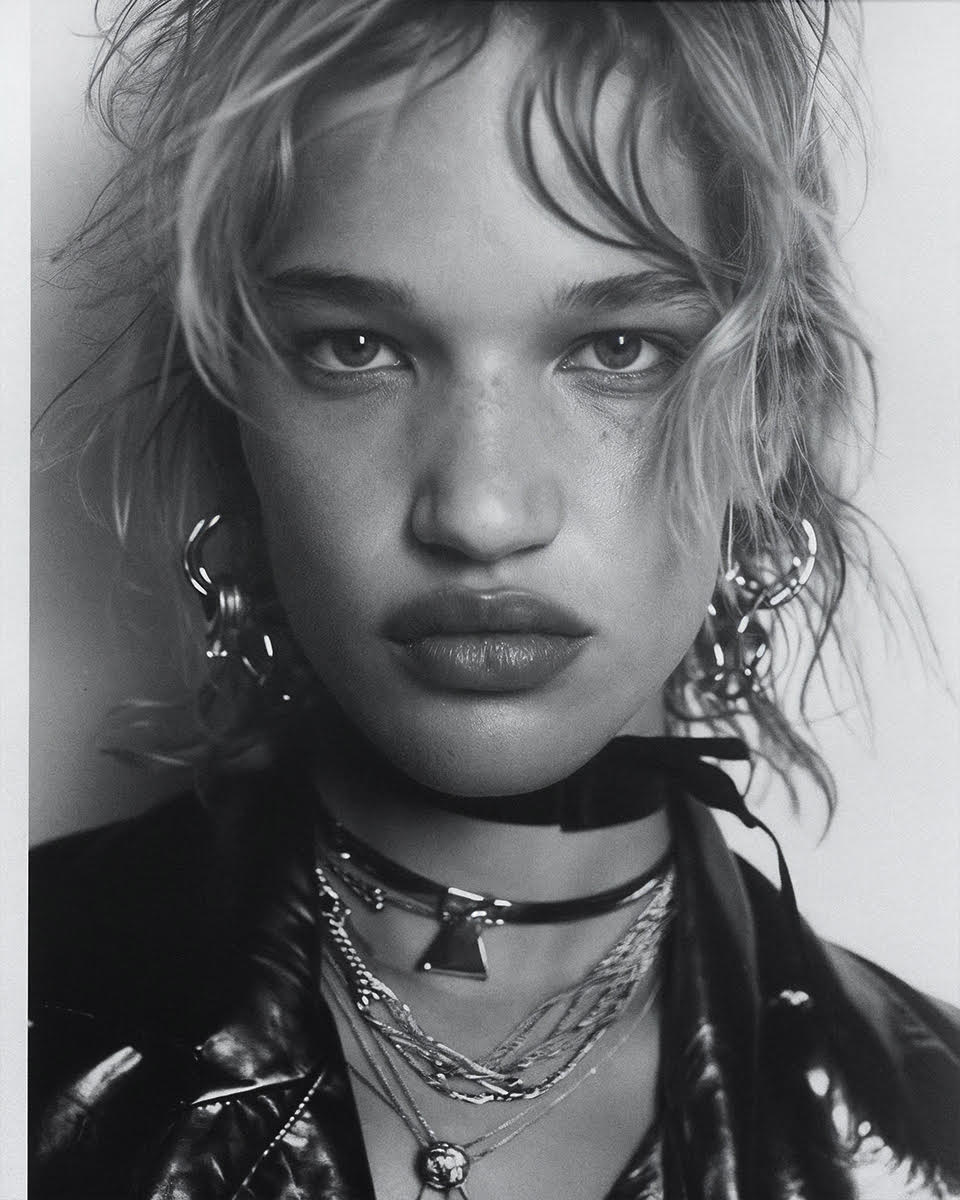
In his detailed analysis of other key aspects of fashion photography—such as framing, camera focus, angles, styling, lighting, hair and makeup, setting, and casting—Donelli concludes that the technology is now largely ready for commercial use, especially when paired with skilled post-production and retouching.
The Challenge: Garment Replication via Generative AI
One of the major challenges in applying AI to fashion imaging, as Donelli highlights, is garment replication—the ability to dress subjects in virtual garments that precisely replicate the look and feel of real clothing.
This is an area where our engineering team has recently made significant strides, achieving impressive results.
Generative AI Fashion Virtual Models
Imagga engineers have successfully transformed images of clothes on plastic mannequins into stunning visuals featuring AI-generated human models.
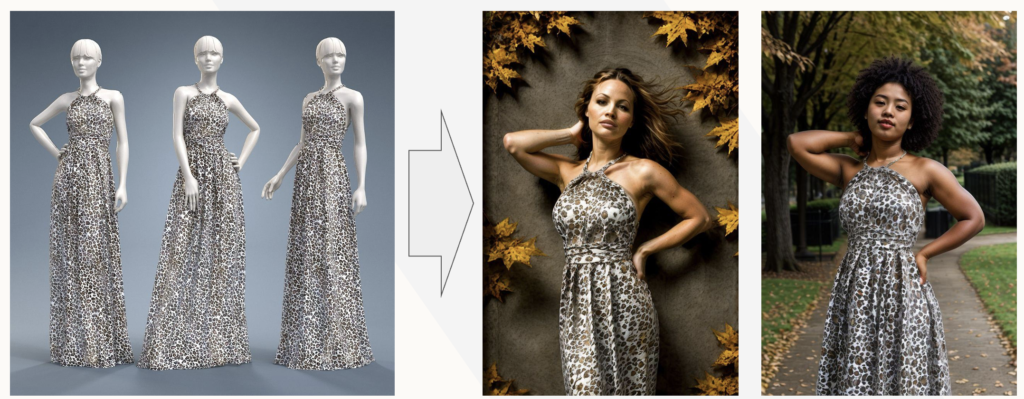
They’ve developed a model that not only showcases how a given dress looks on women of different body shapes and sizes but also how various design variations of the dress appear.
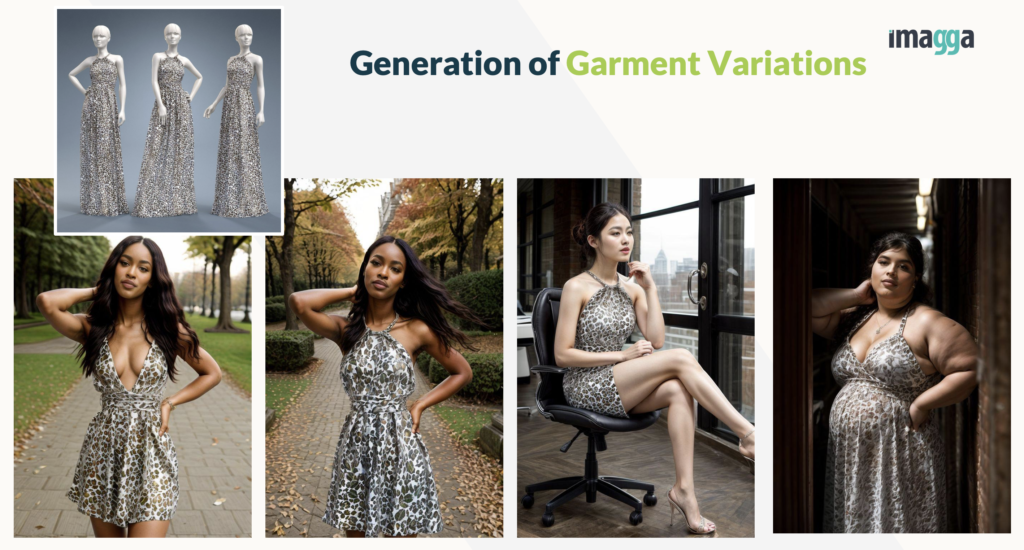
They have even demonstrated how the same dress looks on women of similar body shapes but from different races and age groups.
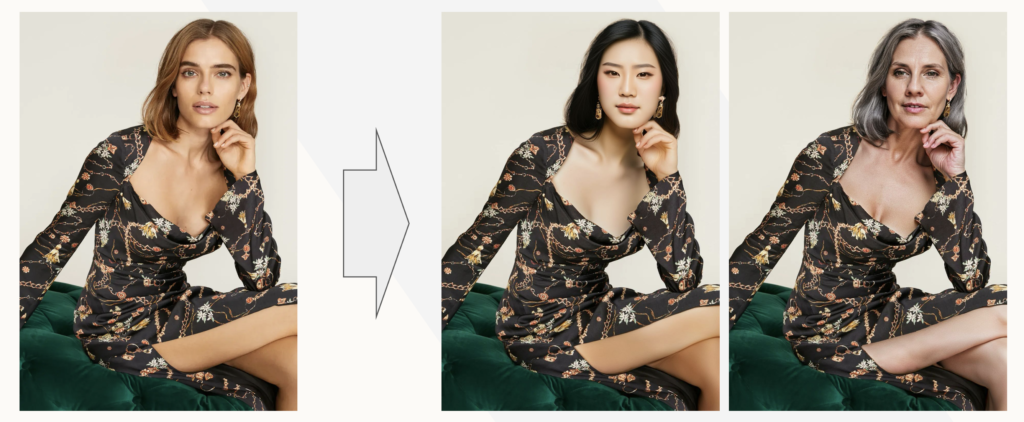
Virtual Try-On
A virtual try-on lets users visualize how clothing would look on them without trying it on physically. It is difficult to build because it requires accurate body simulation, accounting for diverse shapes, sizes, and fabric movement.
Our engineering team has made significant advances with our virtual try-on fashion functionality, which will allow users to upload a photo and see the exact fit on their body, offering a highly personalized and delightful experience.
For online fashion retailers, where user experience is a key differentiator, our virtual try-on has the potential to significantly enhance engagement and conversion rates. By allowing customers to see exactly how clothes will fit using their own photos, it creates a more immersive and personalized shopping experience.
The virtual try-on functionality enhances confidence in online purchases by bridging the gap between virtual browsing and real-life fitting rooms.
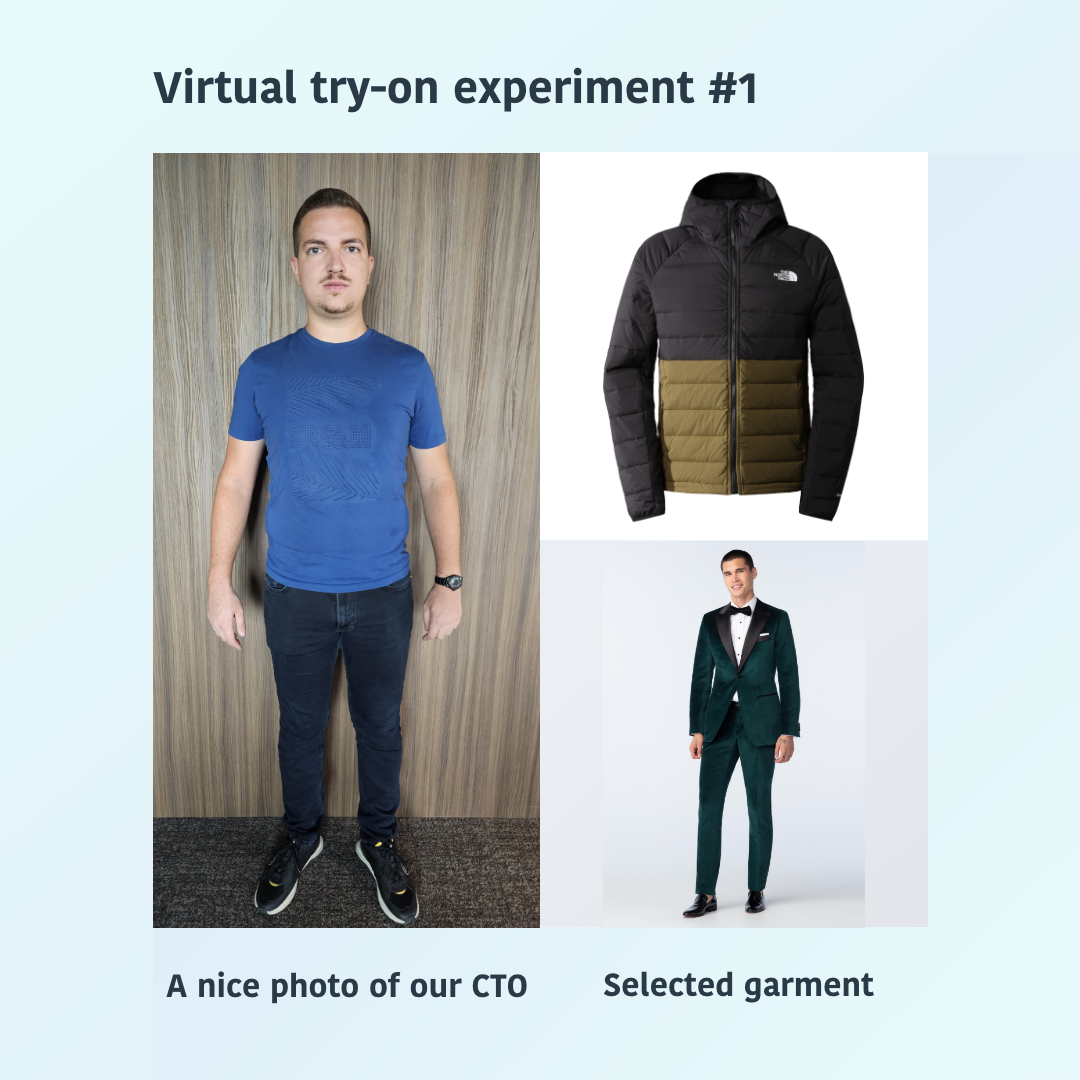 | 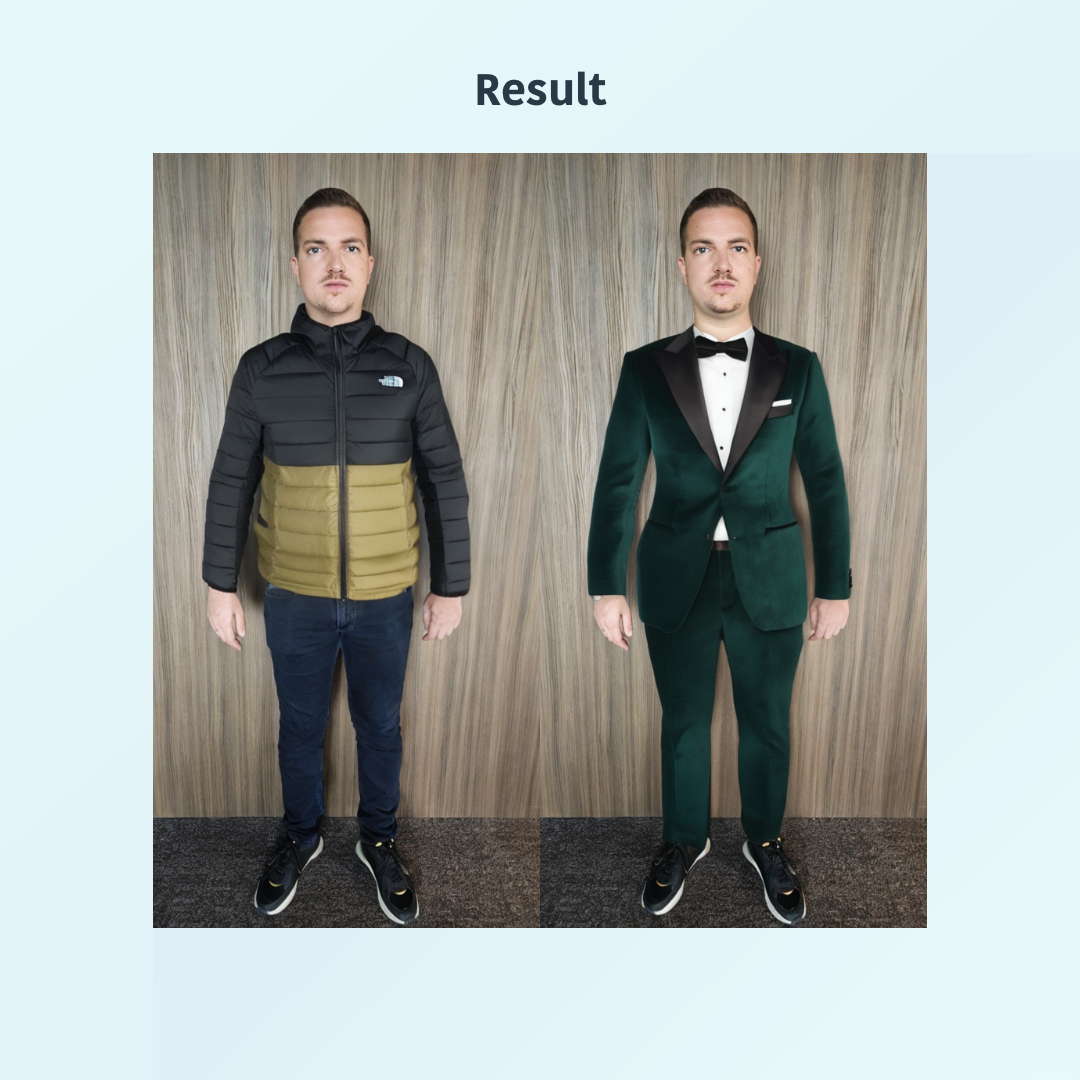 |
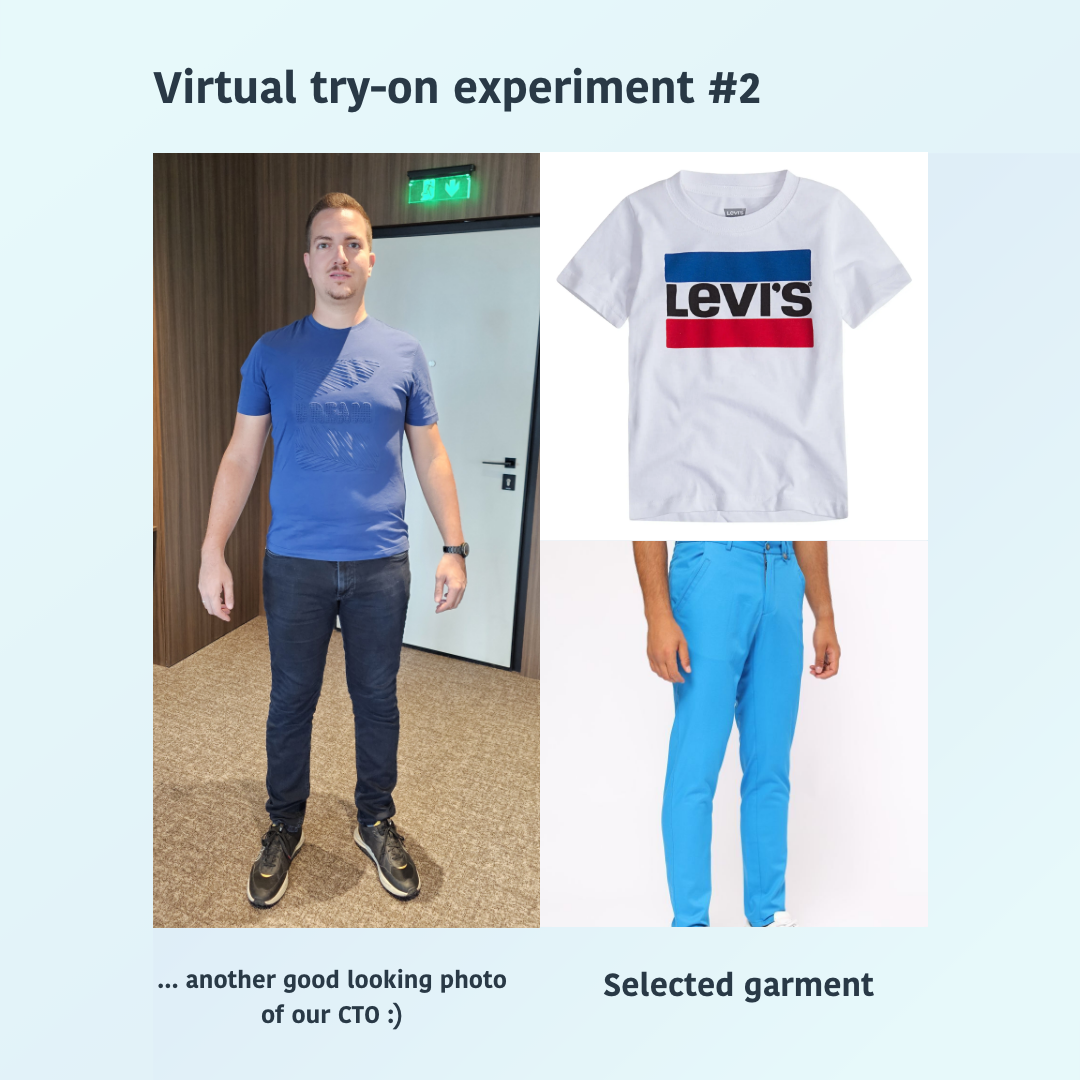 | 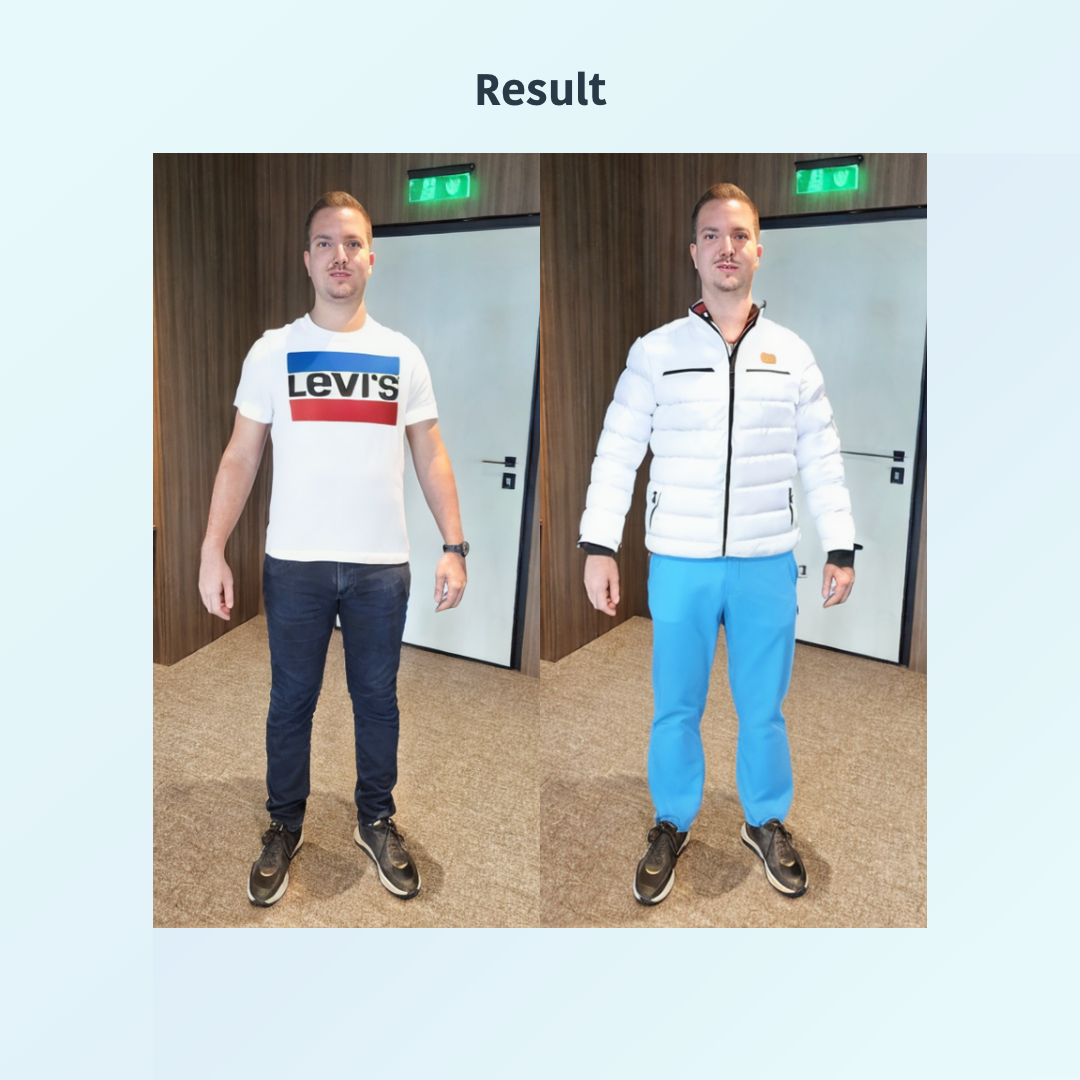 |
The Technology Behind the Generative AI Fashion
Virtual human models are powered by Low-Rank Adaptation Models or LoRA models. These are relatively small machine learning models designed to efficiently adapt and learn from new data. Training LoRA models is the next step toward achieving precision in photorealistic fashion imagery. Image processing algorithms further enhance photo quality by correcting imperfections like glare and color discrepancies.
Implementing generative AI, image processing, and image recognition technologies is no easy task. Here are some of the key challenges:
Skin Tone Accuracy
Accurate representation of skin tone is critical to creating realistic virtual models. Generative AI must be trained on diverse datasets to capture a wide range of skin tones without introducing bias. This requires high-quality data and advanced color calibration techniques to ensure virtual models appear natural under various lighting conditions and on different displays.
Body Posture and Movement
Simulating realistic body postures and movements is particularly challenging. Virtual models must interact with clothing naturally, meaning the AI must understand and accurately replicate fabric dynamics and how they drape over different body shapes. This task demands complex algorithms that predict cloth movement, requiring extensive computational resources and advanced modeling techniques.
Finger and Hand Positioning
Modeling hands and fingers accurately is difficult due to their intricate movements and interactions with objects. Fingers require detailed articulation to avoid unnatural poses that can detract from the overall realism of the virtual model.
Seamless Interaction with Apparel
For a realistic appearance, clothing must conform naturally to the virtual model’s body shape. This involves accurately simulating how fabric interacts with body contours, a particularly challenging task with complex garments, such as layered outfits or those made from multiple materials.
Environmental Factors
Achieving photorealism in Generative AI Fashion imagery requires accurate simulation of environmental factors, such as lighting and background elements. Whether it’s ambient or direct lighting, these aspects play a crucial role in how clothing appears on virtual models. Properly replicating light sources ensures the images feel natural and realistic. Similarly, background objects need to be rendered in harmony with the scene to avoid distractions and enhance the overall authenticity of the visual.
Scalability and Speed
While creating a few high-quality virtual models is achievable, scaling the process to accommodate thousands of products across various poses and settings is daunting. Ensuring this process remains time- and cost-effective without sacrificing quality is a critical challenge for commercial applications.
The future of Generative AI Fashion
Generative AI is transforming fashion imagery by creating photorealistic images which are virtually indistinguishable from those captured through conventional photography, creating lifelike virtual models and making content production faster and easier. However, there are still big challenges related to garment replication, seamless interaction of models with garments, and scaling the technology for widespread use.
With our deep expertise in image recognition and custom visual model training, combined with ongoing R&D, we’ve developed solutions to help clients bring their ideas to life through advanced AI technologies.
If you’re exploring how AI can enhance your fashion imagery, reach out!
